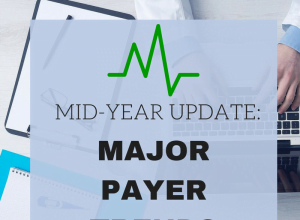Pity the QALY. The health economist’s admittedly imperfect measure has become a whipping boy of those who pretend the US can sustain policies that ignore aggregate spending levels in health care. Peter J. Neumann, ScD defends the QALY in the latest issue of JAMA. (Note: I serve on the Executive Advisory Board of Neumann’s Center for the Evaluation of Value & Risk in Health.)
Pity the QALY. The health economist’s admittedly imperfect measure has become a whipping boy of those who pretend the US can sustain policies that ignore aggregate spending levels in health care. Peter J. Neumann, ScD defends the QALY in the latest issue of JAMA. (Note: I serve on the Executive Advisory Board of Neumann’s Center for the Evaluation of Value & Risk in Health.)
The Quality Adjusted Life Year (QALY) is a way to measure health status over time, where perfect health (as measured by patient preferences) is defined as 1.0 and death 0.0. All else being equal a higher QALY is better than a lower one. The QALY is an improvement over simply measuring life expectancy. For example, it seems obvious that a person would prefer to live 5 years in perfect health than 5 years in a coma. QALYs reflect that preference. A nice feature of QALYs is they can be used across disease areas and types of treatment.
QALYs are imperfect methodologically. But the limitations are fairly modest (e.g., preference ratings are difficult to ascertain, the order in which health states are experienced is not reflected) and don’t explain the antipathy toward the very notion of measuring and publishing QALYs. There are many other kinds of imperfect measurements we rely on routinely, such as the consumer price index or even blood pressure, however you don’t hear a lot of attacks on those tools because few oppose measuring inflation or hypertension.
But the long knives are out for the QALY because of the widespread aversion to considering value and resource allocation in health care financing. QALYs themselves don’t incorporate any cost information. However cost per QALY calculations are used to influence coverage decisions, especially in other countries such as the UK. Sometimes a specific cost per QALY threshold is set for whether a treatment will be covered at all, and this is an understandable source of controversy.
The QALY is under attack due to its association with resource allocation decisions and rationing, but is likely to survive, even if explicit cost per QALY coverage decisions go by the wayside. As Neumman writes:
Shunning the QALY would not alter the unsustainability of the health spending trajectory or the need to confront the cross-disease and cross-sector tradeoffs inherent in health choices, but would merely mask them… Unavoidably, ways are needed to measure the value of health care delivered, especially to inform market-based approaches. And the QALY, perhaps a bit bruised by recent events, will be waiting in the wings.









